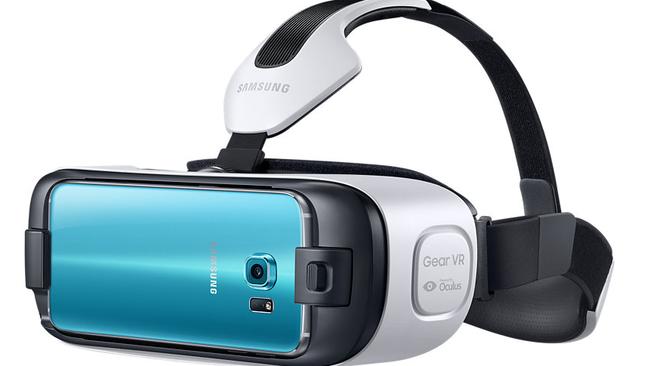Samsung releases second virtual reality viewer, the Gear VR
Attend a Paul McCartney gig, check out Mars or fly over Iceland - Samsung’s new virtual reality headset is a dream.

Samsung has released a second amazing virtual reality viewer, and if you haven’t sampled VR, you’re missing something special.
With VR, your immediate surroundings are blotted out and you are immersed in an alternative 3-D world where you can look around and even turn your head to see behind you.
You sample the environment just like you are there. After VR sessions, I am jolted back to the reality of being in a newsroom. It’s like waking up from a deep sleep.
During my “dreaming”, I watched a Paul McCartney concert and my senses were tricked into thinking I was there. Next I watched movies inside a cinema. All that was missing was the popcorn. Then I flew over the plains of Iceland, and savoured 3-D panoramas on Mars.
The trouble is you have to own particular Samsung phone model to enjoy this. The first Gear VR required you to own a Galaxy Note 4. The new headset requires a Galaxy S6 or S6 Edge. The phone sits in the front of the headset and displays a stereoscopic view that is magnified by the Gear VR’s lenses into 360-degree splendour.
There are several differences between the two headsets. First, the picture you see is slightly sharper despite the Note 4 and Galaxy S6 displays having the same pixel resolutions: 1440 x 2560 pixels.
The new viewer is more than 20 per cent smaller and the view narrower. You see a little less without moving your head, but it’s sharper because of a higher pixel density.
Adding to this sharpness is the rotating dial across the top that has a wider focus range than before. I could adjust the focus to get really sharp text and still images — better than with the original VR headset. Ordinarily I need reading glasses; I don’t with the Gear VR for S6.
Unfortunately that clarity doesn’t translate to 360-degree video looking sharp. Some video, such as the flyover of Iceland, still looks very mediocre in quality when stretched out around a 360-degree panorama.
There are more differences. While you’re delving around in that alternative world, it’s now easier to find the device trackpad with your fingers, there’s no longer a plate that covers the phone at the front and, importantly, there’s a microUSB slot for powering the headset directly without eating up phone battery.
When you’re not actively using it, the headset will charge the phone too. There’s a fan for defogging the lenses but these lenses still tended to get misty, maybe from sweat. The cooler processor on the S6 and S6 Edge means the headset is less prone to heating issues than with the Note 4 assembly.
The Facebook-owned firm Oculus VR partnered with Samsung to produce the Gear VR headsets and the Oculus store offers an increasing, but still limited, array of VR content.
I was even able to buy a slide show of Martian landscapes called Mars is a Real Place from within virtual reality. (I seem to remember these landscapes being free last time around.)
My favourite apps so far are 360 Stories — sets of narrated panoramas — and Oculus Cinema, where you’re inside a huge empty virtual cinema watching movies. You can change the setting to a home theatre or even a cinema on the moon.
But no one is watching with you. Now, that’s a challenge for Samsung: for two people with Gear VR headsets to sit next to each other and enjoy a virtual night at the movies.
One rider: the Note 4 has a slot for a microSD card so you could download gigabytes of VR media and store it without a problem. The S6 and S6 Edge are limited to internal storage so you may need to monitor your downloads.
The Gear VR for S6 costs $299 but you’ll need to own an S6 or S6 Edge first.


